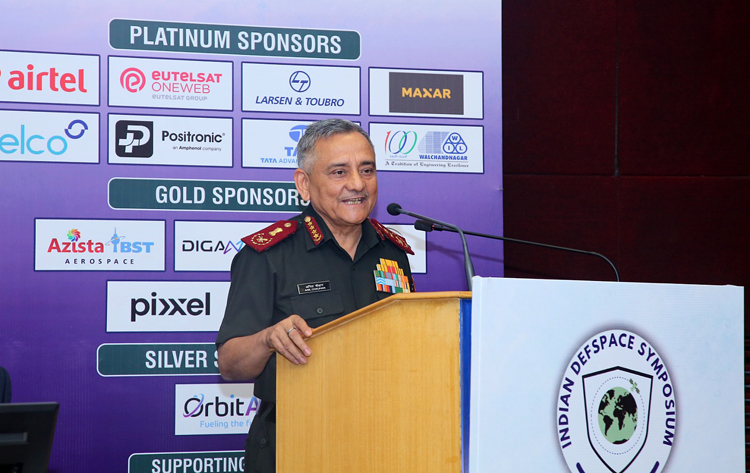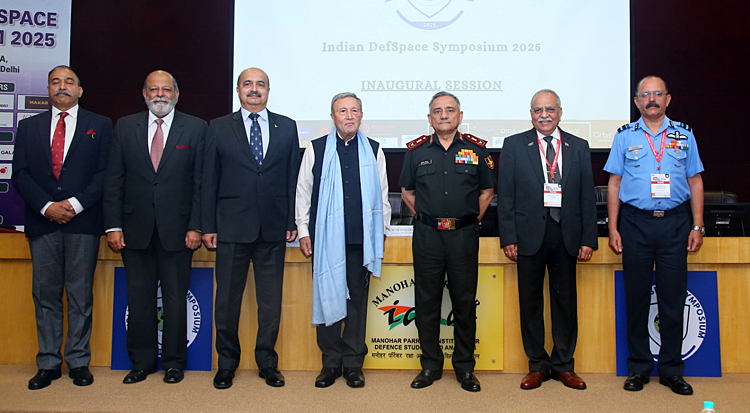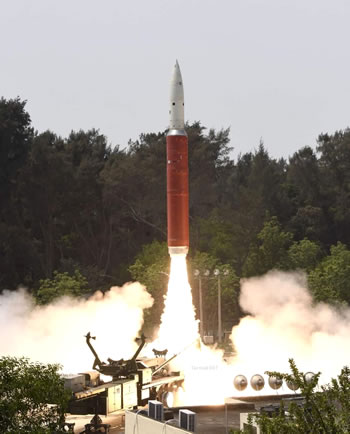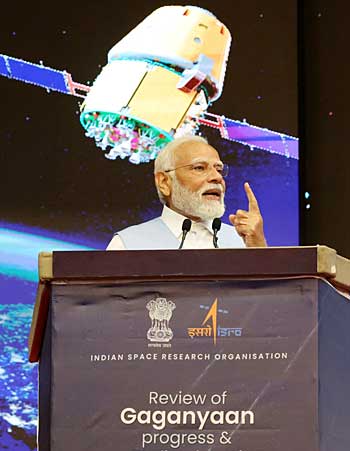INDIAN ARMED FORCES CHIEFS ON OUR RELENTLESS AND FOCUSED PUBLISHING EFFORTS

The insightful articles, inspiring narrations and analytical perspectives presented by the Editorial Team, establish an alluring connect with the reader. My compliments and best wishes to SP Guide Publications.

"Over the past 60 years, the growth of SP Guide Publications has mirrored the rising stature of Indian Navy. Its well-researched and informative magazines on Defence and Aerospace sector have served to shape an educated opinion of our military personnel, policy makers and the public alike. I wish SP's Publication team continued success, fair winds and following seas in all future endeavour!"

Since, its inception in 1964, SP Guide Publications has consistently demonstrated commitment to high-quality journalism in the aerospace and defence sectors, earning a well-deserved reputation as Asia's largest media house in this domain. I wish SP Guide Publications continued success in its pursuit of excellence.
- Global Partners Urged to Tap India's Shipbuilding Potential: Rajnath Singh at Samudra Utkarsh
- All about HAMMER Smart Precision Guided Weapon in India — “BEL-Safran Collaboration”
- India, Germany deepen defence ties as High Defence Committee charts ambitious plan
- G20 Summit: A Sign of Global Fracture
- True strategic autonomy will come only when our code is as indigenous as our hardware: Rajnath Singh
- India–Israel Joint Working Group Meeting on defence cooperation to boost technology sharing and co-development
52 Military Satellites
Chief of Defence Staff (CDS) General Anil Chauhan recently announced that in a significant push to enhance its military capabilities, India is set to launch 52 dedicated military satellites for intelligence gathering, reconnaissance and surveillance
 |
The Author is Former Director General of Information Systems and A Special Forces Veteran, Indian Army |

The Indian DefSpace Symposium 2025, organised by the Indian Space Association (ISpA) from April 7 to April 9, was held at the Manohar Parrikar Institute for Defence Studies and Analyses (IDSA), New Delhi. The symposium brought together key stakeholders from the military, space industry, and policy domains to discuss India's growing ambitions in the militarisation of outer space.
It was brought out in these columns recently that America's 2025 Annual Threat Assessment, released in March 2025, has stated that Russia's satellite launch in February 2022 possibly was for nuclear weaponisation in space. Whatever be the case, it can be taken for granted that the US and China are also actively working on deploying weapons in space, and China's nuclearisation of space is what should concern India the most, including EMP strikes that would cripple all communications and electronics, bringing the nation to standstill.
General Anil Chauhan said that a military space doctrine, which will serve as a guiding policy for the Armed Forces, is expected to be finalised within the next three months, marking a pivotal step in India's strategic evolution as a space power
Addressing the Indian DefSpace Symposium 2025, the Chief of Defence Staff (CDS) General Anil Chauhan announced that in a significant push to enhance its military capabilities, India is set to launch 52 dedicated military satellites for intelligence gathering, reconnaissance and surveillance. He also said that a military space doctrine, which will serve as a guiding policy for the Armed Forces, is expected to be finalised within the next three months, marking a pivotal step in India's strategic evolution as a space power.

General Chauhan said, "Space is the ultimate high ground, and we are looking at launching 52 satellites for the purpose of intelligence gathering, reconnaissance and surveillance". He emphasised the importance of public-private partnerships in achieving this ambitious goal, noting that ISRO's collaboration with private industry will be the key to scaling up India's space capabilities. This move aligns with the government's broader push to liberalise the space sector, encouraging private players to contribute to satellite manufacturing, launch services, and downstream applications.
The 52 military satellites mentioned by the CDS actually comprise Phase III of the Space Based Surveillance (SBS-III), approved by the Cabinet Committee on Security (CCS) on October 8, 2024

In addition to the satellite launches, General Chauhan announced that a military space doctrine is expected to be finalised within the next three months. This doctrine will serve as a policy framework for the armed forces, outlining the role of space in military operations, the integration of space in joint warfare, and the development of counter-space capabilities to protect India's assets from adversaries. The doctrine will provide clarity on how the armed forces, particularly the newly established Defence Space Agency (DSA), will leverage space-based assets for strategic and tactical purposes. The doctrine is also expected to address the growing threat of anti-satellite (ASAT) weapons, space debris, and electronic warfare in space, ensuring that India's space assets remain secure and operational in a contested environment.
The 52 military satellites mentioned by the CDS actually comprise Phase III of the Space Based Surveillance (SBS-III), approved by the Cabinet Committee on Security (CCS) headed by Prime Minister Narendra Modi on October 8, 2024. These 52 satellites, enhanced with artificial intelligence (AI), will bolster India's surveillance capabilities, especially along borders with China, Pakistan and Myanmar, as well as in the maritime domain.
This doctrine will serve as a policy framework for the armed forces, outlining the role of space in military operations, the integration of space in joint warfare, and the development of counter-space capabilities to protect India's assets from adversaries

SBS-III is handled by the National Security Council Secretariat (NSCS) along with the DSA under the integrated headquarters in the defence ministry. The project involves the launch of 52 satellites in Low Earth Orbit (LEO), Medium Earth Orbit (MEO) and Geo-stationary Orbit (GEO) for surveillance. Construction and launch of 21 satellites will be by ISRO and the remaining 31 satellites will be done by private companies.
ISRO has said that these new satellites will utilise AI, will be able to interact with each other and thus gather Geointelligence more effectively. This implies that a satellite at a 36,000 km altitude detects something of interest on the ground, it can ask another satellite in the lower orbit to check it more carefully and then give the base station this information.
The SBS-III project cost is ₹26,968 crore (approximately $3.07 billion). This will provide the Indian Armed Forces dedicated satellites for their land, sea and air-based missions. SBS-III will be a game changer, providing round-the-clock Earth Observation capabilities that will be unaffected by weather and daytime. This will enable exercising proactive defence and taking timely action against any contingencies arising.
SBS-III will be a game changer, providing round-the-clock Earth Observation capabilities that will be unaffected by weather and daytime
Finally, SBS-III project is reportedly to be "completed in a decade". Looking at the mounting threat to India's national security, especially the emerging China-Pakistan-Bangladesh anti-India nexus, the volatile situation in Myanmar, and growing Chinese activities in the Indian Ocean Region (IOR), it would be good if complete deployment of these 52 military satellites is done at the earliest possible, not waiting for a decade.





